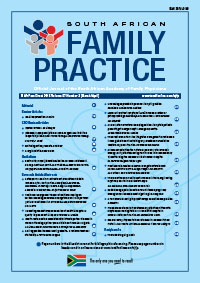Dysmenorrhoea
Keywords:
primary and secondary dysmenorrhoea, endometriosis, pelvic infection, intrauterine contraceptive device
Abstract
Dysmenorrhoea is a descriptive term for several conditions that cause menstrual pain. While various grades of menstrual pain occur commonly in the menstruating population, approximately 15% of this group of women experience sufficient pain and discomfort to report to healthcare services. Dysmenorrhoea is classified as either primary or secondary, and consideration should be given to a third type, i.e. once-off, at the time of passing an endometrial cast. Primary dysmenorrhoea is predominantly found in young women, is caused by prostaglandin activity, and responds well to oral contraceptive use, as well as nonsteroidal anti-inflammatory drug medication. Secondary dysmenorrhoea, which can occur in any age group, and appears as a consequence of other serious conditions, is the main challenge. The most common other serious conditions include endometriosis, the use of intrauterine contraceptive devices, pelvic infections, uterine adenomyosis, sometimes fibroids, and ovarian cysts. Clearly, these conditions must be considered, diagnosed and treated to resolve the main complaint of dysmenorrhoea.
Section
Review Articles
By submitting manuscripts to SAFP, authors of original articles are assigning copyright to the South African Academy of Family Physicians. Copyright of review articles are assigned to the Publisher, Medpharm Publications (Pty) Ltd, unless otherwise specified. Authors may use their own work after publication without written permission, provided they acknowledge the original source. Individuals and academic institutions may freely copy and distribute articles published in SAFP for educational and research purposes without obtaining permission.

